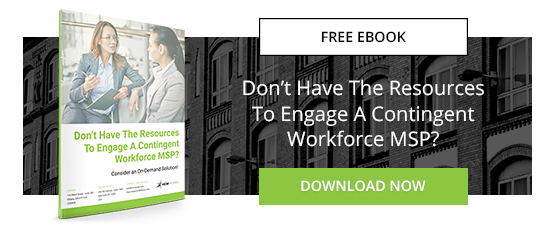The success of procurement department is critical to the overall success of your organization—in fact, it’s just as important as sales. But creating and managing a successful procurement department takes strategic planning, hard work, and dedication. It doesn’t happen overnight. Mistakes can occur, whether you realize you’re making them or not. In order to get in the most optimal position with vendors, it’s important for your procurement personnel to be aware of common blunders. By understanding common mistakes that often occur, they can keep an eye out for them, put processes and procedures in place to avoid making them, learn from them, and fix them in a timely manner.
Here are the seven most common blunders we see within the procurement department.
Blunder #1: Only Taking Price into Consideration
Certainly, price should be a factor that’s taken into consideration when purchasing goods and services from vendors, but other factors need to be taken into account as well. You need to understand the culture, needs, and ultimately business goals of your organization and align your purchases with them. Quality should be an integral part of the purchasing decisions you make in order to get the best value, rather than the best price.
Blunder #2: Not Managing Vendor Relationships
Great vendors can be difficult to come by. If you work with vendors that you value, you must take the necessary steps to manage your relationships with them in order to keep them around for a long time. Loyal, mutually beneficial relationships with vendors can reduce your costs of constantly changing to new suppliers and could lead to discounts, incentives, better service, and innovation.
Blunder #3: Ignoring Social Responsibility
In today’s sales environment, your customers care about more than just quality products and low prices. They care about social responsibility. And they will be performing the required research on your company and vendors to ensure that your organization is acting ethically before purchasing your products. Make sure you take this into account when choosing to work with new vendors. Make sure they are not harming the environment or animals, or using unethical business practices, such as child labor. Working with vendors that do not prioritize social responsibility can severely damage your reputation, and in turn, your profits.
Blunder #4: Ignoring Vendor Compliance
Having an effective vendor compliance policy will protect you if problems or legal issues arise and will allow you to ensure your vendors are working at the highest standards that you’ve set. It will also ensure that you ultimately receive exactly what you wanted, at the correct price, and shipped in the correct way, so you can avoid having to deal with costly and time-consuming errors.
Blunder #5: Not Involving Your Suppliers in Product Development
Your vendors are an important part of your product development, and ultimately, your success in the marketplace. Use them to their fullest advantage by getting them involved in innovation. Request their help with design, features, and standard characteristics of your products to get an edge over your competitors and create products that are fully functional and effective.
Blunder #6: Rushed Buying
Though securing your goods or services in a timely manner is important, rushing to purchase can lead to myriad mistakes, and ultimately, bad procurement decisions. Make sure to strike the right balance between promptness and thoroughness in order to get the best results.
Blunder #7: Not Using Technology
There are many solutions on the market that will make your procurement department more effective and cost efficient. Take advantage of e-procurement software and other tools that will drive efficiencies, provide visibility into procurement spend, reduce wasted time, and eliminate administrative errors.



